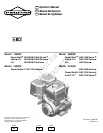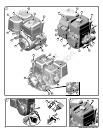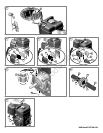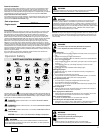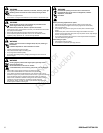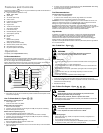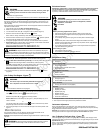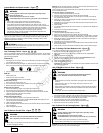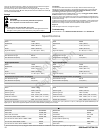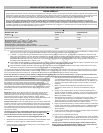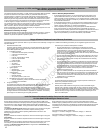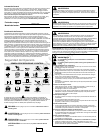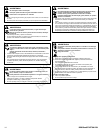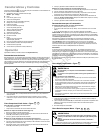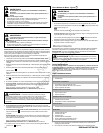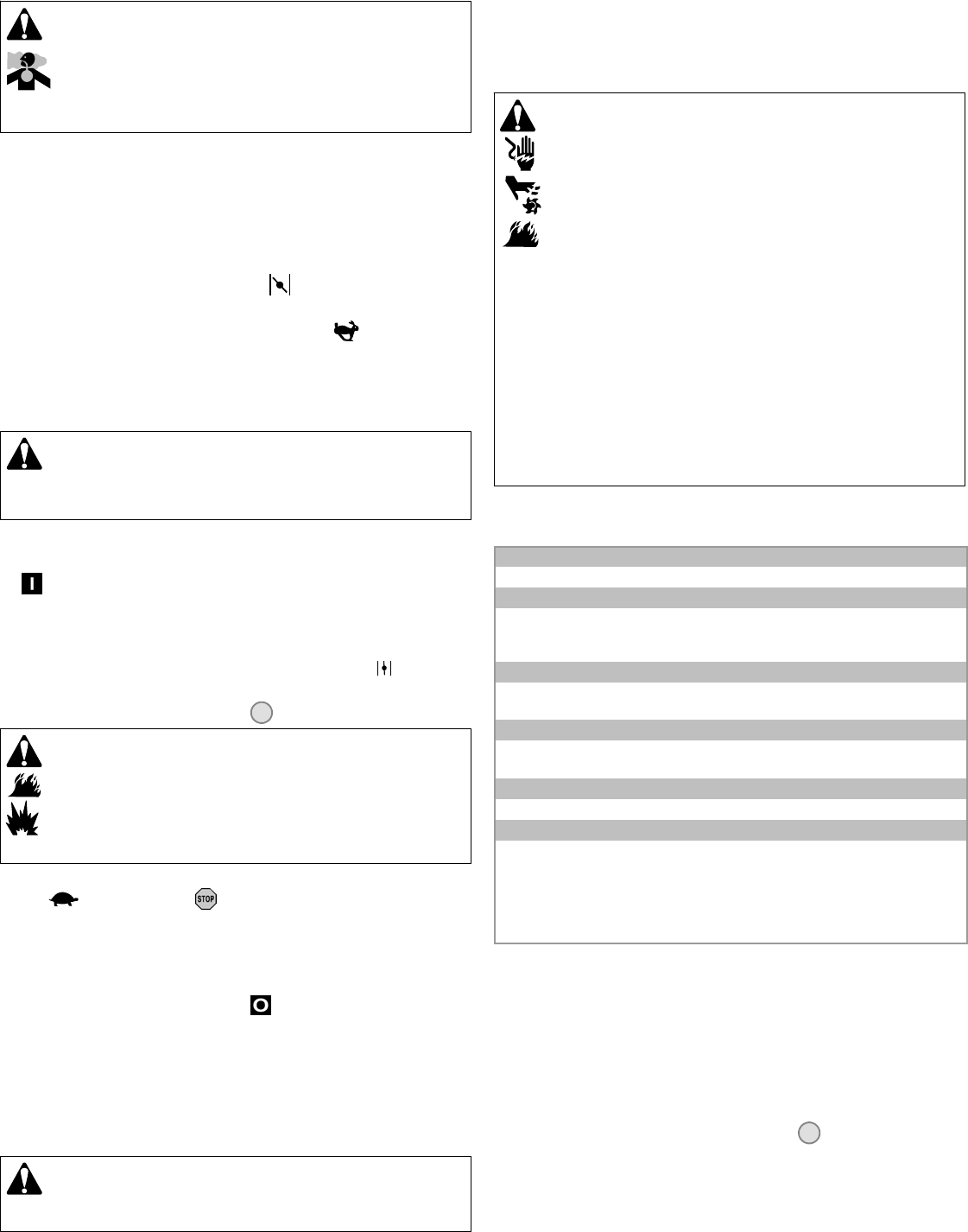
8 BRIGGSandSTRATTON.COM
Engines give off carbon monoxide, an odorless, colorless, poison gas.
Breathing carbon monoxide can cause nausea, fainting or death.
WARNING
Start and run engine outdoors.
Do not start or run engine in enclosed area, even if doors or windows are open.
NOTICE: This engine was shipped from Briggs & Stratton without oil. Before you start
the engine, make sure you add oil according to the instructions in this manual. If you
start the engine without oil, it will be damaged beyond repair and will notbe covered
under warranty.
Note: Equipment may have remote controls. See the equipment manual for location and
operation of remote controls.
1. Check the oil level. See the How To Check/Add Oil section.
2. Make sure equipment drive controls, if equipped, are disengaged.
3. Turn the fuel shut-off valve (A), if equipped, to the on position (Figure 5).
4. Move the choke control lever (B) to the choke
position.
Note: Choke is usually unnecessary when restarting a warm engine.
5. Move the throttle control lever (C), if equipped, to the fast
position. Operate
the engine with the throttle control lever in thefast position.
6. On engines equipped with a stop switch (D), move the switch to the on position.
7. Rewind Start: Firmly hold the starter cord handle (E). Pull the starter cord handle
slowly until resistance is felt, then pull rapidly.
Note: If the engine does not start after repeated attempts, go to
BRIGGSandSTRAT TON.COM or call 1-800-233-3723 (in USA).
WARNING: Rapid retraction of the starter cord (kickback) will pull your
hand and arm toward the engine faster than you can let go. Broken bones,fractures,
bruises or sprains could result.When starting engine, pullthe starter cord slowly until
resistance is felt and then pull rapidly to avoid kickback.
8. Electric Start withSafety Key (F): Pushin the safetyk ey (F). Momentarily pushthe
start switch (G). When the engine starts, releasethe start switch (Figure 6).
9. Electric Start with Automotive Key Switch (H): Turnthe key switch (H)to the start
position. When the engine starts, release the key switch (Figure 8).
NOTICE: To prolong starter life, use short starting cycles, not to exceed15 seconds
per minute. Extended cranking can damage the starter motor.
Note: If the engine does not start after repeated attempts, go to
BRIGGSandSTRAT TON.COM or call 1-800-233-3723 (in USA).
10. As theengine warms up,move the choke control(B)totherun
position
(Figure 5).
How To Stop The Engine - Figure
7
WARNING
Fuel and its vapors are extremely flammable and explosive.
Fire or explosion can cause severe burns or death.
Do not choke the carburetor to stop engine.
1. On modelsequipped witha throttle control lever(A), movethe throttlecontrol leverto
slow
and then to the stop position (see Figure 7).
or
Move the stop switch (B), (if equipped) to the stop position.
or
Electric Start: Remove the safety key (C, Figure 7). Keep the safety key out of
reach of children.
or
Turn the key switch (H, Figure 8) to the off
position. Remove the key switch.
Keep the key switch out of reach of children.
2. After the engine stops, turn the fuel shut-off valve (D) to the closed position. See
Figure 7.
Maintenance
We recommend that you see any Briggs & Stratton Authorized Dealer for all
maintenance and service of the engine and engine parts.
NOTICE: All the components used to build this engine must remain in place for proper
operation.
WARNING: When performing maintenance that requires the unit to be
tipped, the fuel tank must be empty or fuel can leak out and result ina fire or
explosion.
Emissions Control
Maintenance, replacement, orrepair of theemissions control devices andsystems
may be performed by any non-road engine repair establishment or individual.
However, to obtain “no charge” emissions control service, the work must be performed
by a factory authorized dealer. See the Emissions Warranty.
Unintentional sparking can result in fire or electric shock.
Unintentional start-up can result in entanglement, traumatic
amputation, or laceration.
Fire hazard
WARNING
Before performing adjustments or repairs:
Disconnect the spark plug wire and keep it away from thespark plug.
Disconnect battery at negative terminal (only engines with electric start.)
Use only correct tools.
Do not tamper with governor spring, links or other parts to increaseengine
speed.
Replacement parts must be of the same design and installed in the same
position as the original parts. Other parts may notperform as well, may damage
the unit, and may result in injury.
Do not strike the flywheel with a hammer or hard object becauset he flywheel
may later shatter during operation.
When testing for spark:
Use approved spark plug tester.
Do not check for spark with spark plug removed.
Maintenance Chart
First 5 Hours
Change oil
Every8HoursorDaily
Check engine oil level
Clean area around muffler and controls
Clean finger guard
Every 25 Hours or Annually
Clean air filter *
Clean pre-cleaner *
Every 50 Hours or Annually
Change engine oil
Check muffler and spark arrester
Every 100 Hours
Change gear reduction oil (if equipped)
Annually
Replace air filter
Replace pre-cleaner
Replace spark plug
Replace fuel filter
Clean air cooling system *
Check valve clearance **
* In dusty conditions or when airborne debris is present, clean more often.
** Not required unless engine performance problems are noted.
Carburetor Adjustment
Never make adjustments to the carburetor. The carburetor was set at the factory to
operate efficiently under most conditions. However, if adjustments are required, see any
Briggs & Stratton Authorized Dealer for service.
NOTICE: The manufacturer of the equipment on which this engine is installed specifies
the top speed at which the engine will be operated. Do not exceed this speed.
How To Replace The Spark Plug - Figure
9
Check the gap (A, Figure 9) with a wire gauge (B). If necessary, reset the gap. Install
and tightenthe sparkplug totherecommended torque.For gap settingor torque,see the
Specifications section.
Note: In some areas, local law requires using a resistor spark plug to suppress ignition
signals. If this engine was originally equipped with a resistor spark plug, use the same
type for replacement.
Not for
Reproduction



